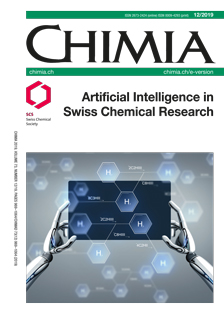Microparticles as Additives for Increasing the Mechanical Stiffness of Polypropylene
FH-HES Universities of Applied Sciences
DOI:
https://doi.org/10.2533/chimia.2019.1039PMID:
31883562Keywords:
Composite, Functionalization, Microparticles, Polymer, PolypropyleneAbstract
Composite materials of polypropylene and mineral microparticles have been generated by compounding and tested in terms of mechanical stiffness. In a first step silica, boehmite and functionalized clay microparticle powder have been mixed with the polymer in a twin-screw compounder. The elastic modulus was highest for mixtures with a microparticle concentration of 5 to 10%w/w. An increase of 25% of the elastic modulus was achieved by simple melt extrusion. In a second step, a maleic anhydride-grafted polypropylene (PP-g-MA) was used as a matrix. When measured by nanoindentation, the pure PP-g-MA matrix showed an elastic modulus twice as high as pure PP, probably because of a partial reticulation. During extrusion, amino-silane functionalized clay microparticles were added to the PP-g-MA matrix and reacted with it by building covalent amide group bonds. The resulting compound material showed an elastic modulus of more than four times the stiffness of pure PP.Downloads
Published
2019-12-18
Issue
Section
Columns, Conference Reports
Categories
License
Copyright (c) 2019 Swiss Chemical Society

This work is licensed under a Creative Commons Attribution-NonCommercial 4.0 International License.
How to Cite
[1]
S. Hengsberger, G. Leignel, E. V. du Breuil, C. Cotting, R. Meuwly, J.-M. Dutoit, T. Chappuis, Chimia 2019, 73, 1039, DOI: 10.2533/chimia.2019.1039.







